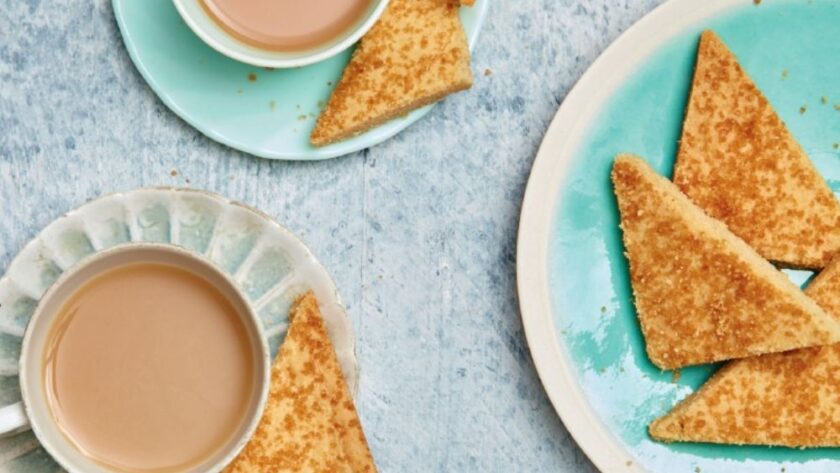Lemon and I have a long-standing love affair. But this shortbread? Let’s just say it had me wrapped around its zesty little finger from the moment it came out of the oven. I first made it on a drizzly Tuesday afternoon, half-distracted, convinced it’d just be “fine.” Well. It nearly wasn’t—because I forgot to chill the dough and ended up with edges that looked like they’d melted off the tin like wax.
But once I got the knack (and added a small trick with the zest), it turned into my secret tea-time weapon. Buttery, with a whisper of citrus sharpness—not a lemon slap in the face. Let me show you how I fixed the wobble, what actually matters here, and why this shortbread is now on repeat in my kitchen.
Why This One Works So Well
The genius of this recipe is how simple it is, but that’s also what makes it risky—there’s nowhere to hide. But Mary’s combo of cornflour and regular flour gives that sandy, melt-in-the-mouth texture. It’s the zest, though, that quietly transforms the whole thing. Most lemon bakes throw in juice, but it just messes with the texture. Here, it’s all about the oils in the zest—and it makes the shortbread sing.
Also: pressing the dough in firmly is not optional. I learned that the hard way when my first batch crumbled like wet sand.
INGREDIENTS + WHY THEY MATTER
- Butter (½ cup / 114g) – Unsalted and very soft. This is what gives shortbread its rich texture. Cold butter won’t cream properly, and your dough will fight you.
- Superfine sugar (¼ cup / 50g) – Dissolves better, giving a delicate texture. I once tried caster sugar instead—still good, but less refined in the bite.
- All-purpose flour (1 cup / 100g) – The structure. Don’t overpack it when measuring or you’ll get a brick.
- Corn starch (scant ½ cup / 50g) – The melt-in-the-mouth magic. It lightens everything.
- Zest of 1 large lemon – Adds fragrance without messing with the crumb. I once tried bottled zest (lazy, I know)—never again.
Making It Yours (Without Ruining It)
- Gluten-Free? I tested with a 1:1 gluten-free flour blend + cornstarch. Still melts in your mouth, but slightly more delicate—cool fully before moving.
- Dairy-Free? Plant-based butter can work, but don’t use the super spreadable stuff—it’ll throw off the fat content. I used a block-style vegan butter with decent results.
- Zest Swaps? Orange zest gives a rounder, softer flavour. Lime is sharper and punchier—good if you like a wake-up shortbread.
MISTAKES I’VE MADE (AND HOW TO AVOID THEM)
| What Went Wrong | Why It Happens | How to Fix It |
|---|---|---|
| Crumbly + broke when cut | Didn’t press mixture in enough | Firmly press into tin—really lean in |
| Greasy bottom | Used overly soft butter | Butter should be soft, not oily |
| Lemon flavour disappeared | Used bottled zest | Use fresh zest—oils matter |
HOW TO MAKE MARY BERRY’S LEMON SHORTBREAD
- Preheat + Prep: Heat oven to 320°F (160°C) or 270°F (fan). Grease a 7-inch square tin—my old metal one works better than non-stick for crisp edges.
- Cream Butter + Sugar: Beat until pale and fluffy—don’t rush this. It should almost look whipped.
- Add Dry Ingredients + Zest: Tip in flour, corn starch, and lemon zest. Mix gently, then knead lightly. It will look crumbly—just keep going until it holds.
- Press into Tin: Really press it down—no loose bits. Smooth the top with a spoon or offset spatula.
- Bake: 50–55 mins. You want pale gold, not browned. Mine took exactly 53 minutes in a fan oven.
- Score + Cool: Mark into 12 fingers while warm—this step is vital. Cool fully in tin before lifting out.
- Sprinkle + Serve: Dust lightly with sugar once cool. I use a tea strainer for an even finish.

TIPS FROM MY KITCHEN
- I chill the dough in the tin for 10 minutes before baking—it holds shape better.
- My lemon zester leaves behind bitter white pith if I’m not careful—zest lightly and only once over each spot.
- I always score with a sharp knife while the shortbread is still warm—if you wait, it crumbles.
STORAGE + SERVING
- Keeps: 5–7 days in a tin at room temp. I tuck in a little parchment to absorb any excess moisture.
- Freezes: Beautifully! Wrap well and freeze for up to 3 months. Defrost at room temp—don’t microwave.
- Serve with: Earl Grey tea, lemon curd, or raspberries. Honestly, I ate two fingers cold straight from the fridge and they were still brilliant.
FAQs – Real Answers from My Oven
Q: Can I use lemon juice instead of zest?
A: No—not in this one. It messes with the fat ratio and softens the dough. Zest is what you need.
Q: Why did mine turn out crumbly?
A: Likely under-pressed dough or over-measured flour. Use scales if you can—it really matters here.
Q: Can I double the batch?
A: Absolutely. Use a 9×13 tin, and increase baking time by 5–10 minutes. Still score it while warm.
Q: Does this taste very lemony?
A: It’s subtle—think buttery shortbread with a citrus wink. Want more lemon? Add zest of 2 lemons.
Try More Recipes:
- Mary Berry Feathered White Chocolate Cheesecake
- Mary Berry Ginger Bread Recipe
- Mary Berry Caramel Square Recipe
- Mary Berry Almond Macaroons Recipe
Mary Berry Lemon Shortbread
Course: DessertsCuisine: BritishDifficulty: Easy12
servings10
minutes55
minutes150
kcalButtery, zesty, melt-in-the-mouth lemon shortbread—easy to make, impossible to stop nibbling. Perfect for tea time.
Ingredients
½ cup (114g) unsalted butter, softened
¼ cup (50g) superfine sugar, plus extra to sprinkle
1 cup (100g) all-purpose flour
Scant ½ cup (50g) corn starch
Finely grated zest of 1 large lemon
Directions
- Preheat oven to 320°F (160°C). Grease a 7-inch square tin.
- Cream butter and sugar until pale and fluffy.
- Mix in flour, corn starch, and lemon zest. Knead gently until smooth.
- Press into tin and smooth the top.
- Bake 50–55 mins, until pale golden.
- Score into 12 fingers while warm. Cool completely in tin.
- Sprinkle with sugar before serving.
Notes
- I chill the dough in the tin for 10 minutes before baking—it holds shape better.
- My lemon zester leaves behind bitter white pith if I’m not careful—zest lightly and only once over each spot.
- I always score with a sharp knife while the shortbread is still warm—if you wait, it crumbles.

